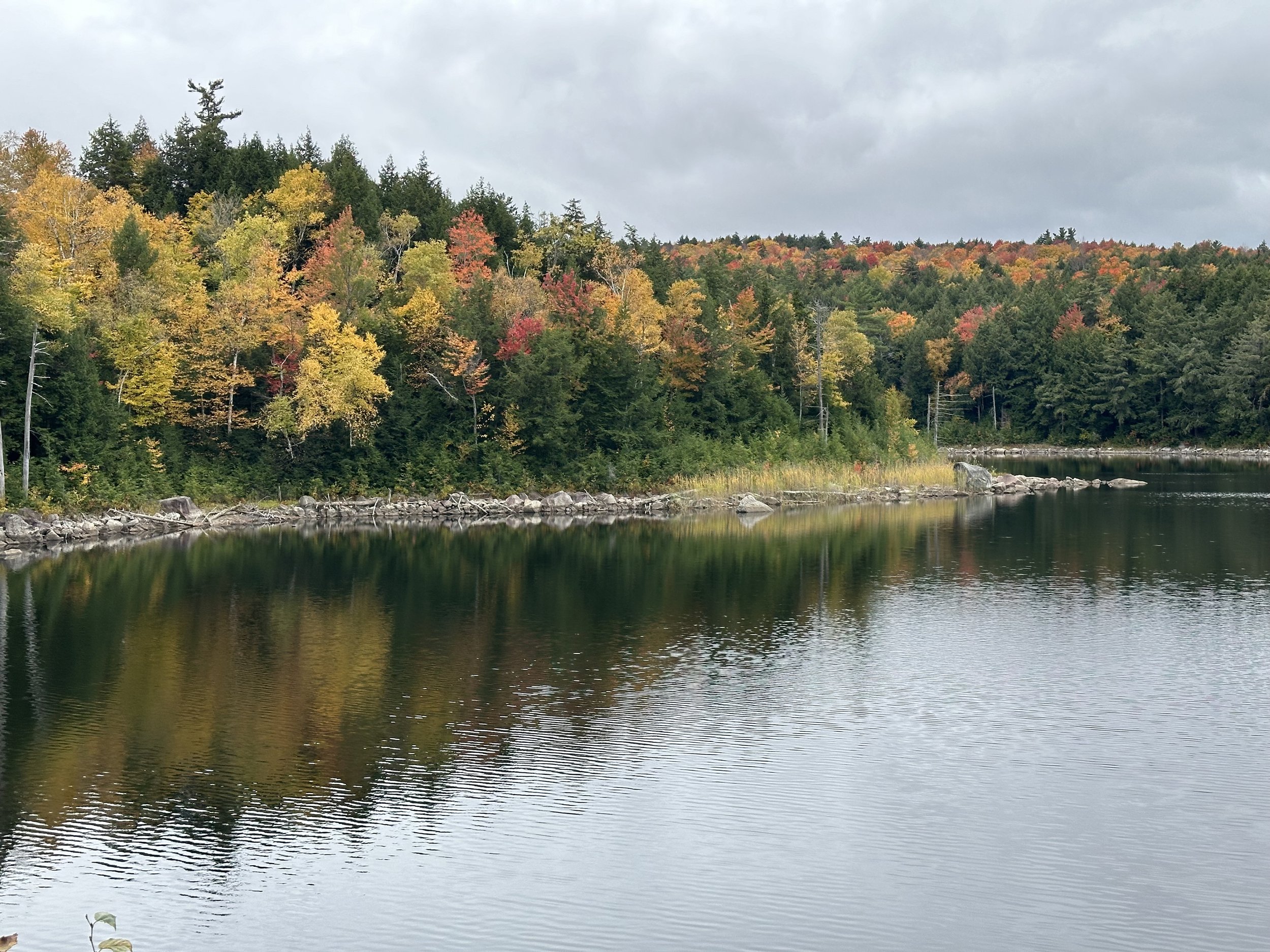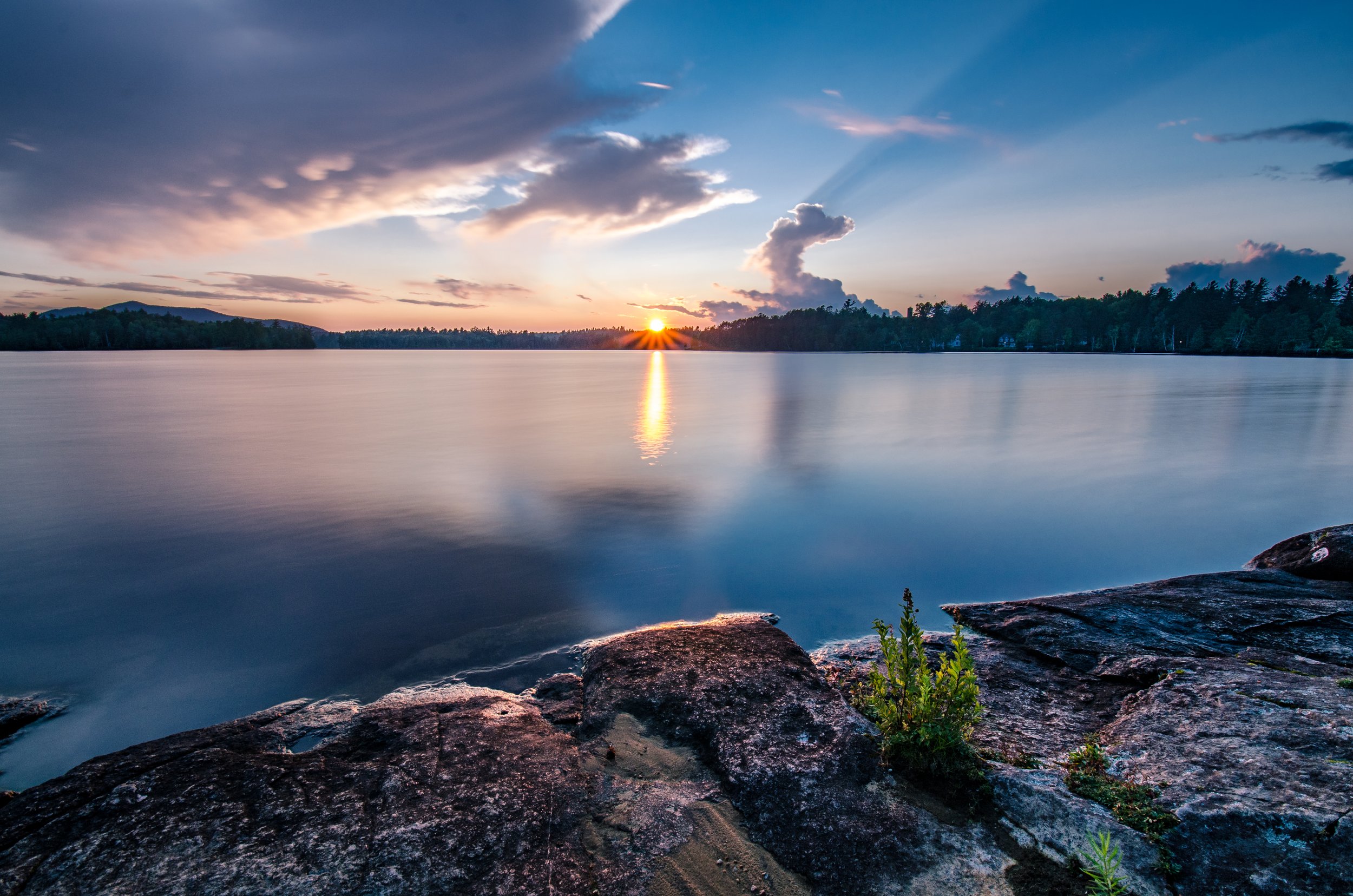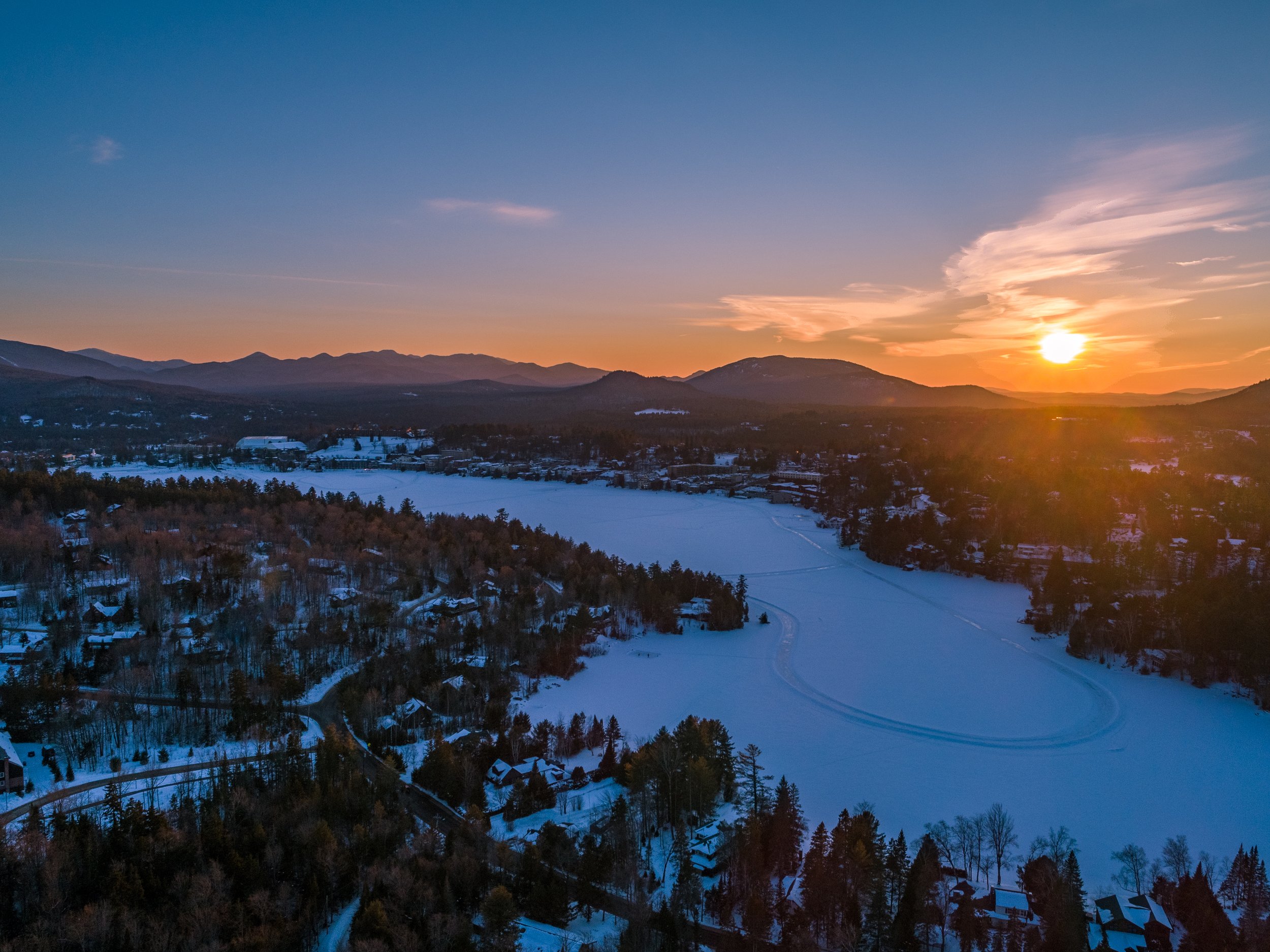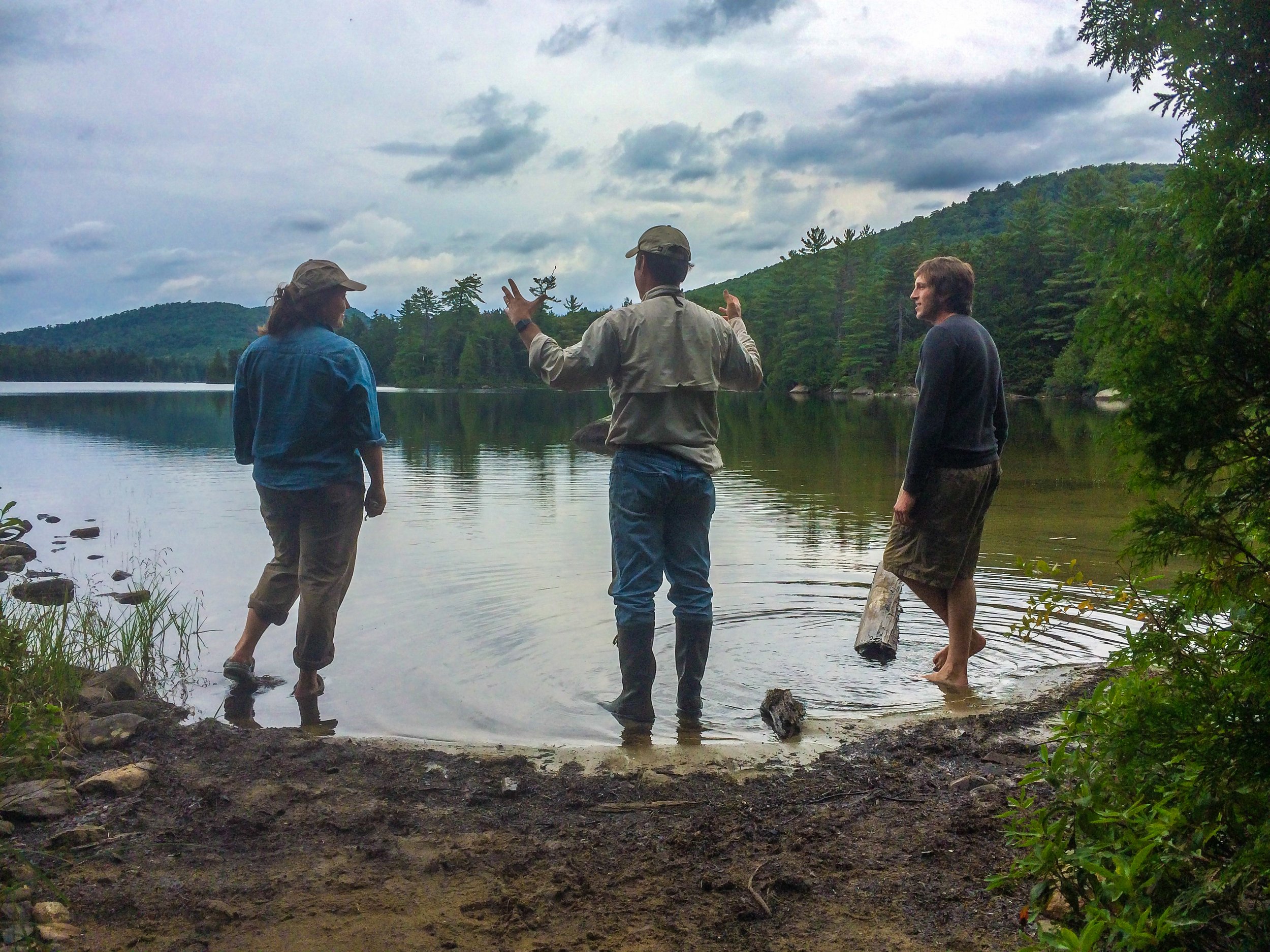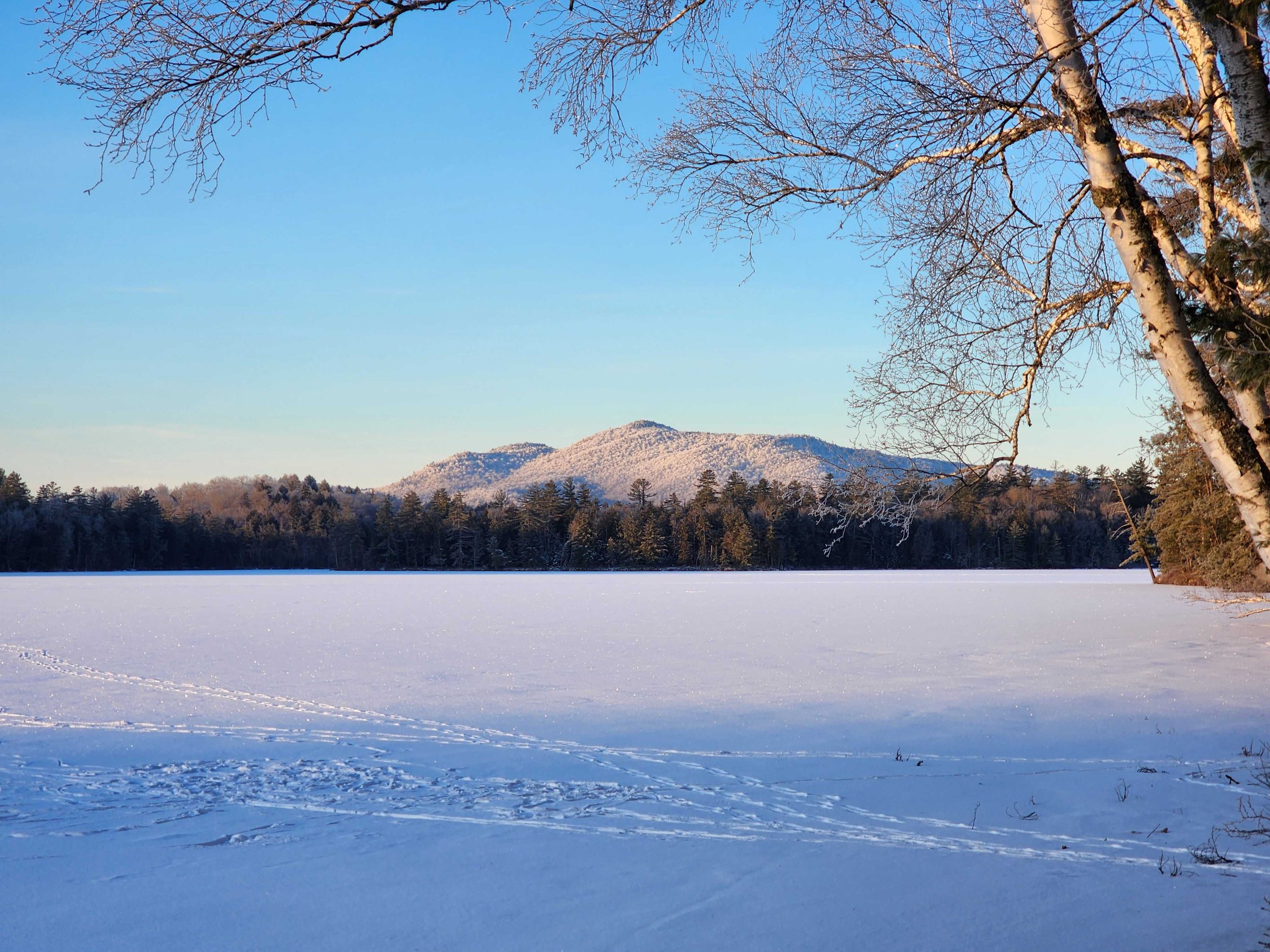
Climate Change Research
This page has been introduced alongside additional Climate initiatives at Paul Smith’s College. It serves as a location for updates on the effects of climate change in the Adirondacks. The following reports and datasets are designed to be suitable for use by students, educators, researchers, journalists, and the general public. Thank you for visiting.
Climate Change in the Adirondacks 1900-2024
Winters in the Adirondacks have become shorter and milder, while summers are growing longer and hotter from 1900 to 2024. Long-term temperature and precipitation data from weather stations in Dannemora, Tupper Lake, and Indian Lake reveal these trends over several decades. The region is warming at a faster rate than the global average, though the pace varies depending on the time frame analyzed. For more information, review the Adirondack Climate Report below.
Paul Smith’s College has been studying phenology since 1990
Phenology is the study of seasonal behavior in plants and animals; when they sprout, migrate, flower, or breed, and how climate affects them. Students, faculty, and researchers have gathered extensive data on various natural phenomena, including ice-out and freeze dates on Lower St. Regis Lake, robin migration patterns, salamander migration, the blooming of red maples, and other significant ecological events.
The Adirondack Watershed Institute staff have contributed to this ongoing research project, showcasing one of the many ways Paul Smith’s College is actively working to deepen our understanding of how climate change impacts the natural world. Learn more about this important work by visiting the link below.
How does Climate impact people?
Climate change presents challenges for communities. In 2011, the flooding that resulted from Hurricane Irene caused massive flooding, taking out bridges, and damaging homes and community spaces. As the climate warms, we will continue to experience wetter, weirder, and wilder weather, which will lead to more frequent freeze thaw cycles, less snowpack, and more impacts for people and natural communities alike. For a region that is dependent on recreation-based tourism, these impacts will not only impact outdoor sports and recreation opportunities, but the jobs and lifestyle that many depend on. To learn more about how climate change impacts communities, read the report below.
The Basics of Climate Change
Climate change refers to long-term shifts in temperature, weather patterns, and global climate systems, primarily driven by human activities. Scientists know this with confidence thanks to decades of independently collected data from weather stations, satellites, and other measurement tools that consistently show a warming trend. The greenhouse effect - where gases like carbon dioxide (CO₂) trap heat in the atmosphere, much like a blanket retains body heat - is a well-documented phenomenon supported by extensive research. The overwhelming agreement among climate scientists, along with multiple lines of evidence, confirms that human activity is the primary driver of recent climate change. Understanding how we know this science is correct equips us to address misinformation and challenge climate denial. Explore the report below to learn more.
Youth for Climate and Water Action
Our team partnered with the Finger Lakes Institute (FLI) at Hobart William Smith Colleges and Zephyr Mangata to create curriculum focused on teaching climate and water topics. This project is supported through funding from the National Oceanic and Atmospheric Administration (NOAA) and the Lake Champlain Basin Program (LCBP). Lessons for teachers and students can be found below, by watershed. If you need individual lessons, or editable documents, contact info@adkwatershed.org.






